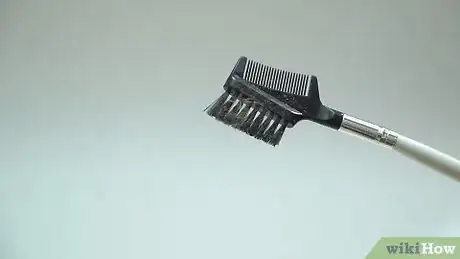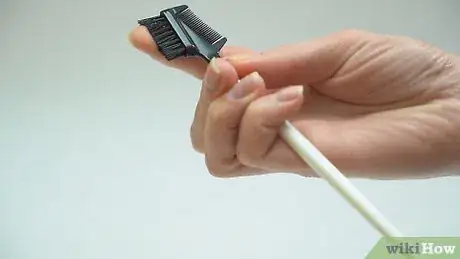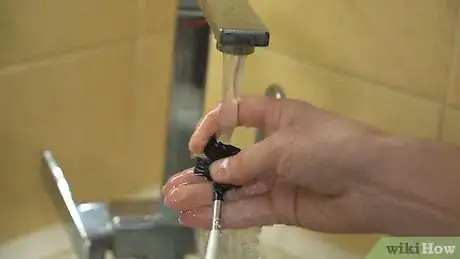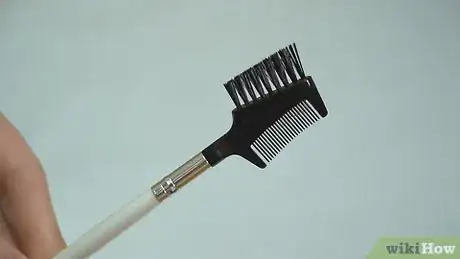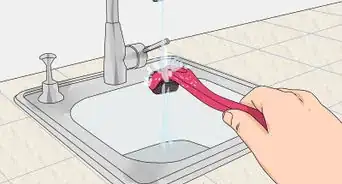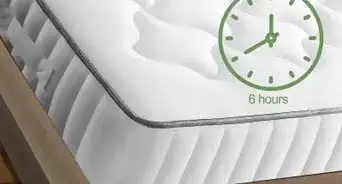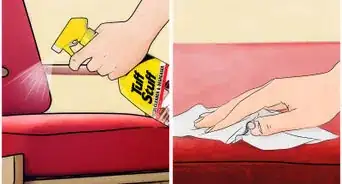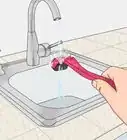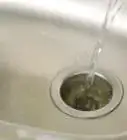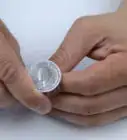This article was co-authored by wikiHow Staff. Our trained team of editors and researchers validate articles for accuracy and comprehensiveness. wikiHow's Content Management Team carefully monitors the work from our editorial staff to ensure that each article is backed by trusted research and meets our high quality standards.
There are 11 references cited in this article, which can be found at the bottom of the page.
The wikiHow Video Team also followed the article's instructions and verified that they work.
This article has been viewed 8,891 times.
Learn more...
Edge control brushes come in handy when you're trying to tame those tiny baby hairs along your hairline. You can also use them for styling natural curls or fluffing your eyebrows into the perfect arch. The hard, close-together bristles can trap a lot of hair, bacteria, and yeast, so it's important to clean the brush at least once a month or whenever you notice lots of hair or white-colored buildup. There’s no need to buy a special brush cleaner when you can use things you probably already have in your kitchen or bathroom.
Steps
Using Vinegar and Baking Soda
-
1Pick off as much hair and buildup as you can with your fingers. Use your thumb and index finger to pull off any hairs in the bristles and white residue at the tips. The easiest way to do it is to grab the base of the bristles with your fingers and slide the hair out, taking the buildup with it.[1]
- You can also use the blades of scissors or a wooden skewer to pick the hairs out of the bristles.
-
2Fill a bowl with warm water, baking soda, and white vinegar. Pour 2 cups (470 mL) of warm water, 2 cups (470 mL) of white vinegar, and 1 tsp (5 g) of baking soda into the bowl. Stir it around with your fingers so all the ingredients are incorporated. It's normal for the baking soda and vinegar to fizzle for a little bit.[2]
- The baking soda and vinegar will soften the dirt and debris in the brush, making it easier to rinse out.
- Use any bowl or pot large enough to hold the brush or at least the bristled part—it's okay if the handle sticks out.
- This is a good choice for metal or plastic edge brushes, not wooden brushes.
Advertisement -
3Put the brush bristle-side down into the bowl for 1 hour. Hold the brush by the handle and place it into the solution. If you want to wash the handle as well (i.e., if your edge brush has a smaller comb-tool at the end of the handle), transfer the mixture to a wide bowl so you can submerge the entire brush.[3]
- Make sure the water line covers the entire head of the brush.
-
4Rinse the brush under warm running water. Hold the brush under the faucet and rinse out the soaking solution. Work the bristles with your fingers to remove the white residue that gathers near the tips.[4]
- If the product buildup is sticking to the tips of the bristles, scrub them with an old toothbrush for a deeper clean.
-
5Lay the brush on a towel with the tips of the bristles facing down. Put a clean, dry towel on the countertop and set the brush on top of it. Makes sure the bristles are facing down so water runs from the base of the bristles to the tips, and into the towel. It’ll take about 3 to 4 hours for the brush to fully dry.[5]
- If the brush won’t stay in place with the bristles facing down, it’s ok to turn them to the side. Just flip them over 1 or 2 hours into the drying time.
Soaking the Brush in a Tea Tree Oil Solution
-
1Use the sharp end of a rattail comb to pull out as much hair as you can. Insert the sharp edge of a rattail comb into the brush at the base of the bristles. Pull upward to loosen the bristles and remove some the stuck hair and white-colored residue.[6]
- If you don't have a rattail comb, any stick-like object with a sharp, pointed edge (like a wooden skewer) will work.
-
2Mix hot water, shampoo, and tea tree oil in a cup. Fill a non-plastic cup with 2 cups (470 mL) of hot (not boiling) water. Add 2 tablespoons (30 mL) of shampoo and 6 to 8 drops of tea tree oil and stir it around with your finger. If you want to wash the entire brush (i.e., if your brush has a little fine-toothed comb on the handle that needs cleaning), use a wide bowl instead of a cup so the brush can lay flat.[7]
- Tea tree oil has antimicrobial and antifungal properties that will kill any bacteria or yeast on your brush.
- You can use your regular shampoo, but if your edge brush is made of natural (boar) bristles, it’s best to use sulfate-free shampoo if you have some.
- If you’re running low on shampoo or if you don’t have any, it’s okay to leave it out and just use water and tea tree oil.
-
3Put the brush into the cup, bristle-side down, for 25 minutes. Place the bristled end of the brush in the cup so the handle is resting against the side. Make sure the water completely covers the bristles.[8]
- If you're washing more than 1 brush at a time, make sure all of the bristles on each brush are covered.
- Soaking is only recommended for plastic or metal edge brushes.
Warning: Don’t submerge a wooden edge brush because too much moisture can damage the wood. Instead, dip a toothbrush into the solution and tease the gunk out of the bristles, from base to tip.
-
4Remove the brush and rinse it after 25 minutes. Hold the brush under cool running water and work through the bristles with your fingers. Scrub the brush on your palm to wash any shampoo and oil residue along with other gunk that was in the brush.[9]
- If you notice any hairs that have loosened up from the bristles, pull those out and put them in the trash. Don’t let them wash down the drain because that’s just asking for a clog!
-
5Lay the brush with bristles facing down on a clean towel. Shake out the excess water over the sink and lay the brush onto a dry cloth or paper towel. Let it dry for at least 3 to 4 hours before you use the brush again.[10]
- If you need to use the brush sooner, blast it with warm air from a hairdryer to speed up the drying time.
Warnings
- Don’t submerge a wooden edge brush in water because too much moisture can eat away at the finish and weaken the wood.[12]⧼thumbs_response⧽
Things You’ll Need
Using Vinegar and Baking Soda
- Rattail comb (or another sharp, stick-like object)
- Bowl (non-plastic)
- Warm water
- Baking soda
- Vinegar
- Dry towel
- Toothbrush (optional)
Soaking the Brush in a Tea Tree Oil Solution
- Rattail comb (or another sharp, stick-like object)
- Cup or bowl (non-plastic)
- Water
- Shampoo
- Tea tree oil
- Dry towel
- Toothbrush (optional)
References
- ↑ http://boards.bsd.dli.mt.gov/Portals/133/Documents/cos/Infection%20Control%20Standards%20approved-3.pdf
- ↑ https://youtu.be/6pCEMANqoLI?t=26
- ↑ https://youtu.be/6pCEMANqoLI?t=50
- ↑ https://youtu.be/rhy48mbl_68?t=198
- ↑ https://youtu.be/rhy48mbl_68?t=223
- ↑ https://youtu.be/rhy48mbl_68?t=89
- ↑ https://www.ncbi.nlm.nih.gov/pmc/articles/PMC1360273/
- ↑ https://youtu.be/rhy48mbl_68?t=160
- ↑ https://youtu.be/rhy48mbl_68?t=202
